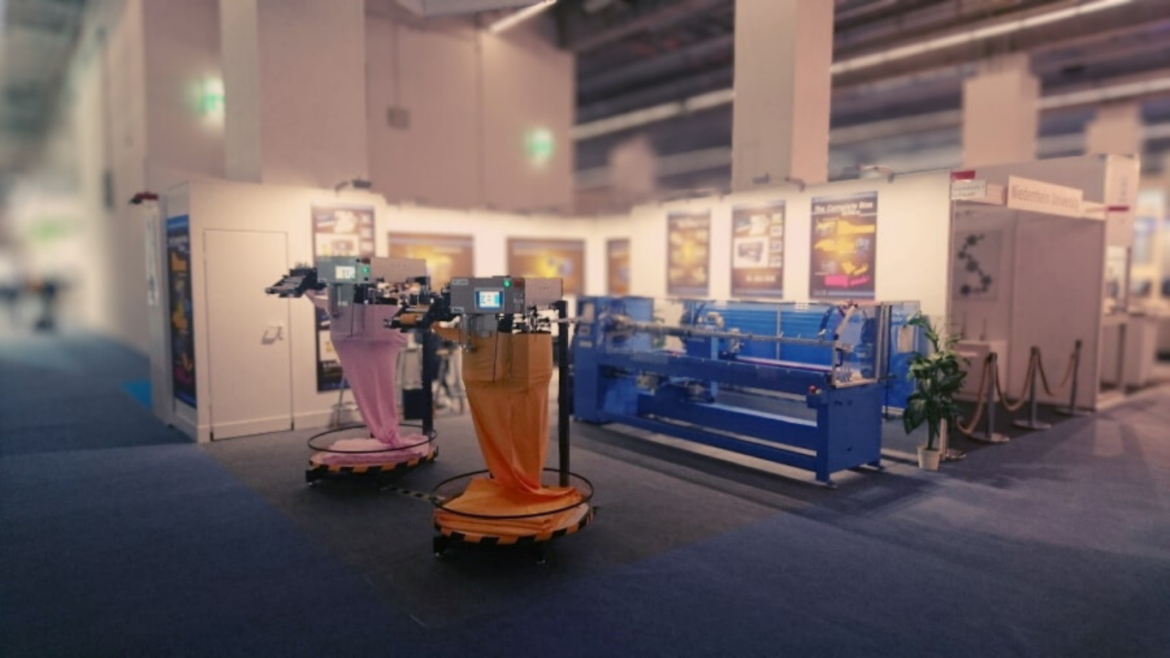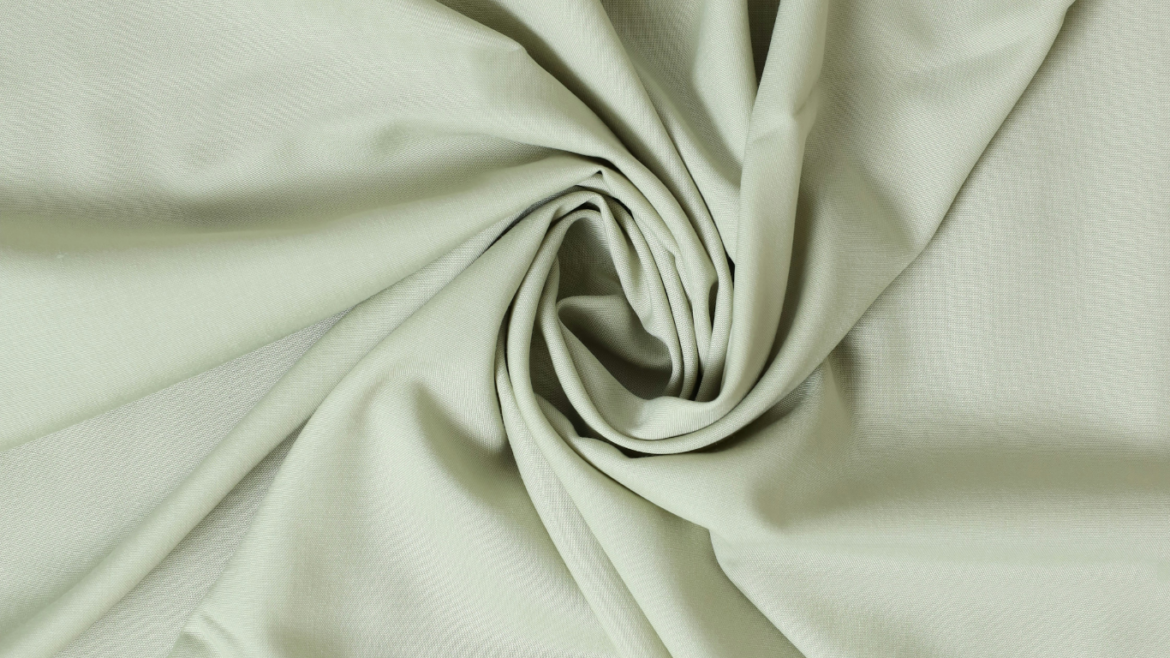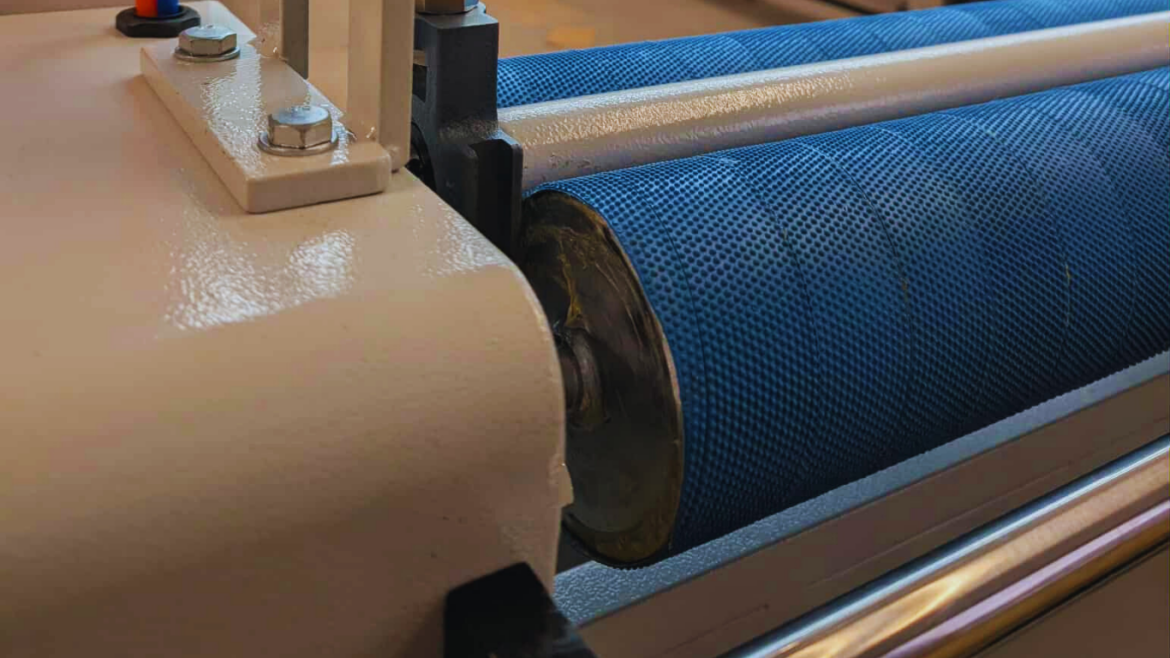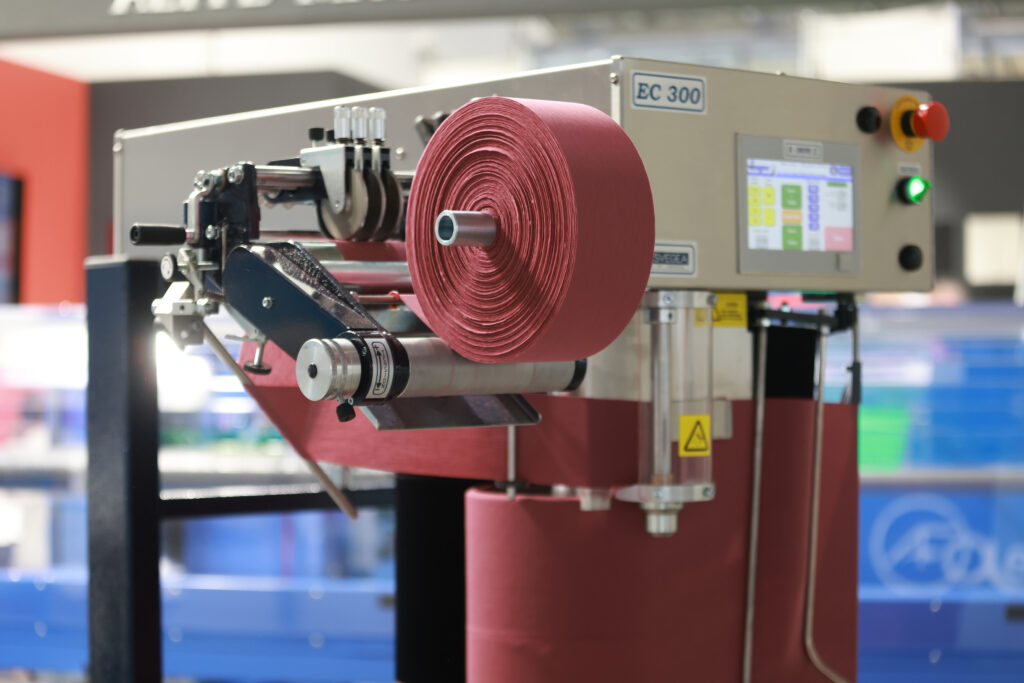In today’s fast-paced textile industry, precision, speed, and sustainability are no longer optional — they’re essential. That’s why manufacturers around the world are turning to Swedish textile cutting machinery — specifically Svegea, a company that’s been redefining automated cutting solutions since 1952.
Svegea’s Swedish-engineered solutions help manufacturers by focusing on automation, sustainability, and user-friendly design to improve efficiency, reduce waste, and adapt to market demands. Their machines support the creation of smarter, more connected factories through integration with Industry 4.0 principles, making them ideal partners for reshoring efforts and sustainable production goals.
Automation: The Foundation of Competitive Manufacturing
High-Speed Precision Cutting
Svegea’s textile cutting machinery from Sweden is engineered for high-speed, precise cutting, which helps produce consistent quality and faster production times. Every machine is designed to maintain exacting standards even at maximum operational speeds, ensuring that manufacturers can scale production without sacrificing quality.
- EC-450XF Collarette Cutting System: Awarded at Texprocess 2023 for its innovation and sustainability, this fully automatic system delivers high-speed, low-waste performance with precision that’s become the industry benchmark.
- Euro-Collarette Fully Automatic Series: These models feature the intuitive E Drive 2 panel and two-step cutting for multiple bands — ideal for high-volume operations requiring consistent output.
Automated Processes That Reduce Labor Dependency
Svegea integrates automatic tube sewing units for creating sewn tubes in rolled or flat-folded forms, reducing the need for operator assistance and minimizing human error.
- TSU 200 A/AF Tube Sewing Unit: Minimal operator input, maximum efficiency. This system exemplifies how automation enables manufacturers to redirect skilled labor to higher-value tasks.
- Bias Cutter / Winder 200: Smooth unwinding and rewinding into single ply rolls with minimal manual intervention.
- Bias Cutter CMB 1800: Versatile and adaptable across fabric types, streamlining the entire bias binding process.
Supporting Reshoring with Smart Automation
Automation facilitates reshoring operations by making local manufacturing more competitive and efficient. Sweden’s textile cutting machinery industry leads this transformation, offering manufacturers the tools they need to bring production home without sacrificing cost-effectiveness.
Sustainability: Engineering for a Better Future
Precision That Reduces Waste
Precision cutting and automation help maximize fabric usage, minimizing material waste. Svegea’s machines are engineered to optimize every centimeter of fabric, contributing directly to both profitability and environmental responsibility.
- Strip Cutter CMS 1800A2: High-speed cutting for bias tape, trims, and bindings with advanced nesting algorithms that reduce offcut waste.
- TSO 380 G/GF Tubular Knit Slitter: Reduces waste and improves material yield through intelligent cutting patterns.
Energy-Efficient Engineering
Svegea’s machinery is designed to be energy efficient, lowering consumption and environmental impact. Every system is optimized for minimal power draw without compromising performance, making textile cutting machinery from Sweden a smart choice for manufacturers committed to reducing their carbon footprint.
- RRS-800 Fully Automatic Roll Slitting Machine: Offers motorized knife control and adjustable speed for consistent quality while maintaining low energy consumption throughout extended production runs.
Supporting Circular Economy and Recycled Materials
By improving garment durability and promoting longevity through efficient production, Svegea’s machines contribute to a more circular economy. The advanced technology can support the use of recycled materials in production, accommodating the varied characteristics of reclaimed fabrics without compromising cut quality.
- FIM CMI 210 R / ZR Fabric Inspection Machine: Detects defects and inconsistencies in both virgin and recycled materials before they reach the cutting floor, ensuring quality regardless of source.
User-Friendly Design: Versatility Meets Accessibility
Adaptable Across Material Types
The cutting machines can handle a wide range of materials, from delicate silks to heavy-duty industrial textiles. This versatility makes Swedish textile cutting machinery ideal for manufacturers serving diverse market segments.
- SV/BK Band Knife Series: Precision cutting for everything from delicate silks to heavy-duty fabrics, with easily adjustable settings for quick material transitions.
- Strip Cutter FA 500: Heavy-duty and reliable, perfect for long production cycles with materials ranging from PVC to non-woven fabrics.
Quick Changeovers for Maximum Productivity
User-friendly interfaces and the ability to quickly switch between patterns and materials reduce downtime and enhance productivity. The intuitive E Drive 2 control panel makes complex operations accessible to operators at all skill levels.
- Euro-Collarette Semi-Automatic Series: A semi-automatic option that cuts two bands simultaneously, with widths ranging from 16 to 140 mm — changeable in minutes, not hours.
Customization for Niche Applications
Svegea provides custom-specific machines and units for niche applications like bias cutting, and can adapt to diverse customer preferences. This flexibility ensures that whether you’re producing standard collarettes or specialized technical textiles, there’s a solution engineered specifically for your needs.
- W 2100S Fabric Rewinding Machine: Perfect re-rolls every time, with customizable tension and speed settings for different fabric types.
Industry 4.0 Integration: Building Smarter Factories
Sweden’s textile cutting machinery leads the way in smart manufacturing integration. Designed to connect seamlessly with modern factory management software the Svegea system enables:
- Real-time production monitoring and quality control
- Predictive maintenance scheduling to minimize downtime
- Data-driven optimization of cutting patterns and material usage
- Integration with inventory and supply chain management systems
This connectivity transforms individual machines into components of an intelligent manufacturing ecosystem. The result? Long-term competitiveness in an increasingly digital industry.
The Swedish Advantage: Seven Decades of Innovation
Textile cutting machinery from Sweden represents more than a geographic label — it’s a commitment to quality, innovation, and sustainability. Svegea embodies the best of Swedish engineering: meticulous attention to detail, long-term reliability, and environmental responsibility.
Svegea has been serving global textile manufacturers since 1952, continuously innovating to meet the evolving demands of modern production. This heritage of excellence makes Swedish textile cutting machinery a global benchmark for quality, sustainability, and technological advancement.
Ready to Transform Your Production Line?
Experience how premium Swedish textile cutting machinery can revolutionize your operations. Whether you’re looking to reshore production, reduce waste, improve efficiency, or build an Industry 4.0-ready factory, Svegea has the solutions you need.
Explore Svegea’s full range of automated textile solutions at svegea.se. For a personalized product demo and consultation, contact Håkan Steene at h.steene@svegea.se.
Let’s build the future of sustainable, efficient textile manufacturing — together.
Fabric shrinkage is one of the most overlooked challenges in garment manufacturing. It can lead to misaligned patterns, wasted material, and inconsistent sizing. If you want to prevent fabric shrinkage before cutting, you need to understand what causes it and how to control it.
Let’s explore practical ways to reduce shrinkage and improve cutting accuracy — without adding complexity to your workflow.
Why Does Fabric Shrink?
Shrinkage happens when fibers contract due to heat, moisture, or mechanical stress. Natural fabrics like cotton, rayon, and linen are especially prone to this. Even synthetic blends can shrink slightly under certain conditions.
When fabric is cut before it stabilizes, the final garment may twist, pucker, or lose its intended shape. That’s why it’s essential to prevent fabric shrinkage before cutting — not after.
Pre-Shrinking vs. Relaxing: What’s the Difference?
Pre-shrinking involves washing or steaming the fabric before cutting. While this method works, it’s often inconsistent and time-consuming. Relaxing, on the other hand, allows the fabric to settle naturally. It reduces internal tension caused by rolling, folding, or transport.
For knitwear and stretch fabrics, relaxing is especially effective. It helps prevent fabric shrinkage before cutting by allowing fibers to return to their natural state.
5 Proven Ways to Prevent Fabric Shrinkage Before Cutting
1. Use a Fabric Relaxing Machine
A fabric relaxing machine gently unwinds and settles the fabric. It reduces tension and helps stabilize the material. This is one of the most reliable ways to prevent fabric shrinkage before cutting in high-volume production.
2. Control Room Conditions
Humidity and temperature affect fiber behavior. Keep your cutting room at a consistent humidity level (around 60–70%) and avoid sudden temperature changes.
3. Let Fabric Rest
If you don’t have a relaxing machine, lay the fabric flat and let it rest for 12–24 hours. This passive method still helps reduce shrinkage and curling.
4. Test Shrinkage Rates
Before bulk cutting, test a small swatch. Wash or steam it, then measure the change. This helps you adjust your cutting patterns and prevent shrinkage before cutting large batches.
5. Avoid Immediate Cutting
Fabric fresh off the roll is often under tension. Give it time to settle before cutting to avoid distortion and waste.
Why It Matters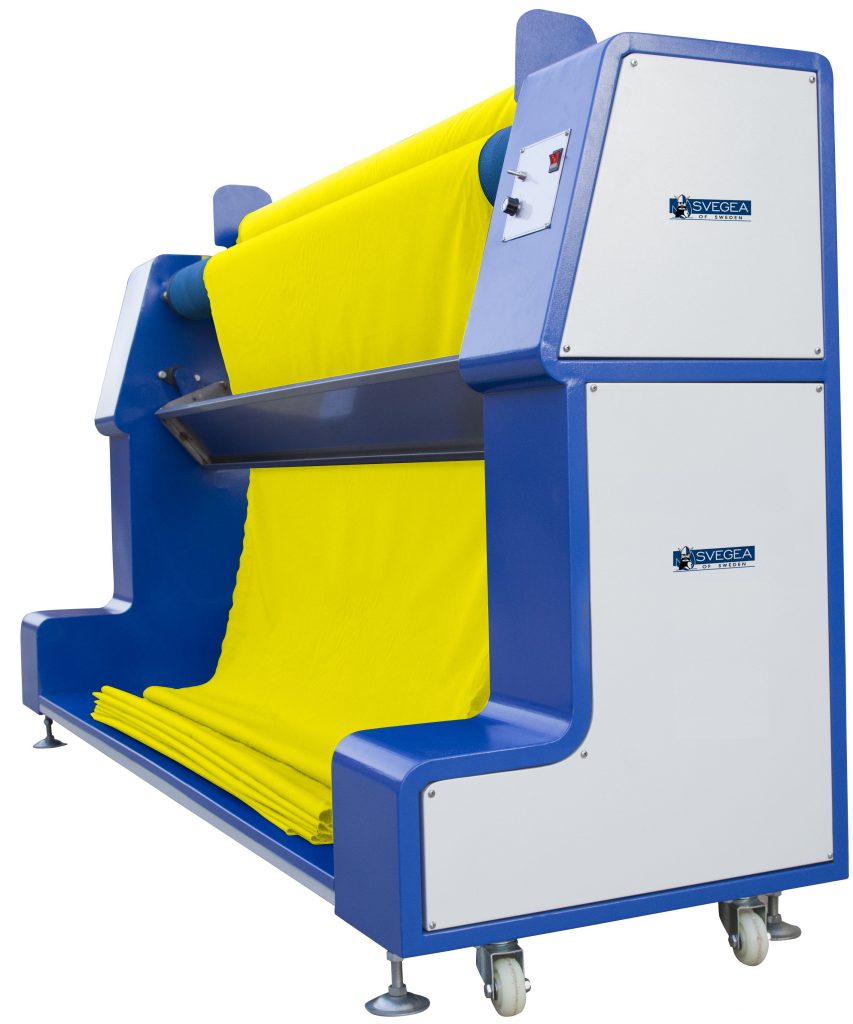
Controlling fabric shrinkage before cutting is essential for consistent garment quality. Shrinkage can distort patterns, misalign seams, and lead to costly rework. By stabilizing fabric early—through relaxing, resting, or testing—you reduce waste and improve production accuracy. This not only protects your materials but also strengthens your brand’s reliability. Manufacturers who take shrinkage seriously deliver better-fitting garments and fewer returns. In a competitive market, precision matters. Starting with properly prepared fabric sets the tone for everything that follows.
Integrating Fabric Relaxing System
Want to improve cutting accuracy and reduce waste? Start by integrating fabric relaxing into your workflow. Whether through manual rest periods or automated systems, the results will speak for themselves.
Many manufacturers now rely on purpose-built equipment like fabric relaxing machines to stabilize material before cutting. These systems gently release tension in the fabric, helping reduce shrinkage and distortion. One example is the CR-210 Fabric Relaxing Machine, which is designed to support high-volume production environments where consistency is key.
By making fabric relaxation a standard part of your process, you set the stage for cleaner cuts, better fit, and fewer production errors.
For a product demo or expert guidance, email Håkan Steene at h.steene@svegea.se
Factories face three hard truths: fabric costs keep rising, buyers want faster delivery, and sustainability matters to customers and regulators. Improving garment manufacturing efficiency puts these pressures into practical order. Get this right and you cut costs, gain speed, and reduce waste.
Where waste really bites
Small mistakes cost big. A mis-inspected roll can mean meters of unusable fabric. Manual checks slow lines and create rework. Labor shortages and rising wages exacerbate every inefficiency. That is why garment manufacturing efficiency must be a daily focus, not a quarterly idea.
Trends pushing factories to change
Across the industry, manufacturers are adopting digital tools. Marker optimization reduces raw material use. Real-time dashboards track defects. Automation speeds repetitive tasks while freeing people to solve problems. Together, these moves enhance garment manufacturing efficiency and make factories more scalable.
Tools that move the needle
Automation is not a single gadget. It is a set of targeted investments that deliver repeatable gains. Start with quality control. Automated inspection and reliable cutting reduce rework and scraps. Next, connect systems so design files, markers, and production data flow without manual transfers. That reduces setup time and avoids costly mistakes. Focused improvements add up fast when your goal is garment manufacturing efficiency.
Fabric inspection: the unsung hero
A lot of manufacturers undervalue inspection. A good inspection line catches faults before cutting, preventing defects that would otherwise propagate through sewing and finishing. The CMI 210 ZR fabric inspection machine is built for that exact role. It handles rolls up to 2100 mm, runs roll-to-roll or roll-to-flat, and offers variable electronically controlled speed, photocell edge alignment, and electronic tension adjustments. That level of control reduces hidden waste at the source.
Collarette cutting: precision where it matters
Certain parts of a garment reveal flaws instantly. Collarette and binding components need uniform width and clean edges. Svegea’s collarette cutting machines cover semi-automatic and fully automatic models. They handle tubular knitted fabric with adjustable widths from about 16 to 140 mm. The standard setup cuts two bands at once, and knife units can be added for more. For high-volume runs, the automatic systems remove variability and keep quality consistent.
What success looks like in real numbers
When factories prioritize process control and the right equipment, they see measurable results. Expect fabric waste to drop, lead times to shorten, and quality rejects to decline. These improvements drive margin expansion and help with sustainability reporting. In short, garment manufacturing efficiency converts directly into competitive advantage.
A simple plan to get started
Start methodically. First, audit the cutting and inspection rooms to find where most scrap and rework come from. Next, pilot one change. Try a fabric inspection line or a semi-automatic collarette cutter on a single product style or order run. Train the operators, collect data, and tweak. Finally, scale what proves out. This stepwise approach helps you manage cost and avoid disruption.
The business case
The math usually lands in your favor. Less waste means lower material spend. Tighter quality control means fewer returns and less rework. Faster setup times mean you can run smaller batches and respond to demand. That combination raises throughput without endless headcount increases. If you want to improve garment manufacturing efficiency, this is the route most executives choose.
Focusing on the right tools
Efficiency is not glamorous, but it is decisive. Focus on the right mix of inspection, precise cutting, and connected workflows, and you will see both cost and time benefits. Machines that support those goals, whether a robust inspection unit like the CMI 210 ZR or a scalable Euro-Collarette cutter, are tools that turn good intentions into measurable results.
For a demo or to discuss how this fits your production, contact Håkan Steene at h.steene@svegea.se or visit the Svegea product pages.
The textile industry is undergoing a digital revolution, and AI in textile manufacturing is at the forefront of this transformation. Artificial intelligence reshapes how textiles are created, manufactured, and distributed, from optimizing design processes to enhancing production efficiency.
AI in Textile Design: Innovation Meets Creativity
AI is revolutionizing textile design by enabling faster, smarter, and more efficient pattern-making. Designers now use AI-powered tools to generate intricate patterns, predict fashion trends, and customize designs based on consumer preferences.
How AI Enhances Textile Design:
-
- Automated Pattern Generation: AI algorithms analyze vast datasets to create unique textile patterns.
- Trend Prediction: Machine learning models forecast upcoming fashion trends, helping designers stay ahead.
- Customization: AI-driven tools allow brands to personalize designs based on customer preferences.
AI in Textile Production: Efficiency and Precision
AI is streamlining textile production by automating processes, reducing waste, and improving quality control. Manufacturers are integrating AI into machinery to optimize operations and enhance productivity.
Key AI Applications in Textile Production:
AI is transforming textile production through targeted, high-impact applications. Automated 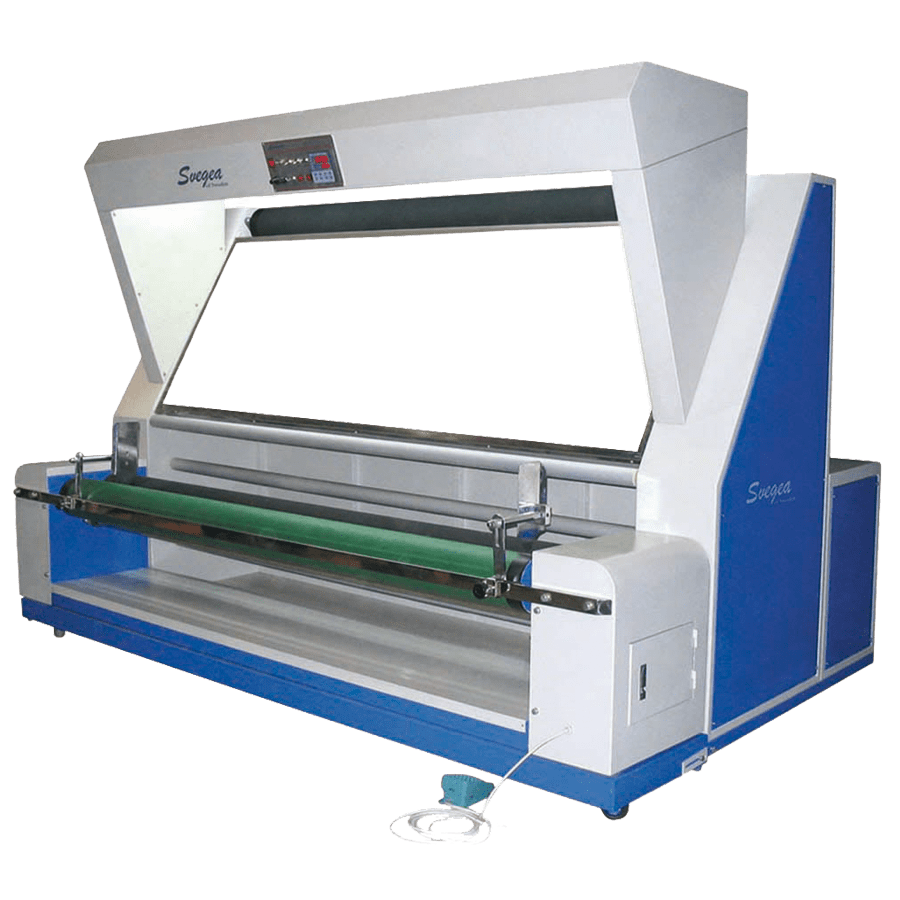 fabric inspection systems now use advanced vision technology to identify defects with precision, ensuring only high-quality materials move forward in the process. On the factory floor, smart manufacturing machines continuously adjust their settings in real time, maximizing efficiency and minimizing downtime. Meanwhile, AI-driven supply chain tools analyze demand patterns and guide resource allocation, keeping operations agile and responsive.
fabric inspection systems now use advanced vision technology to identify defects with precision, ensuring only high-quality materials move forward in the process. On the factory floor, smart manufacturing machines continuously adjust their settings in real time, maximizing efficiency and minimizing downtime. Meanwhile, AI-driven supply chain tools analyze demand patterns and guide resource allocation, keeping operations agile and responsive.
AI-Driven Innovations in the Textile Industry
AI is not just improving efficiency—it’s driving groundbreaking innovations in textile production.
Examples of AI-Driven Innovations:
-
- AI-Powered Smart Textiles: Fabrics embedded with AI sensors for enhanced functionality.
- Predictive Maintenance: AI anticipates machine failures, reducing downtime.
- Eco-Friendly AI Solutions: AI optimizes dyeing processes to minimize environmental impact.
The Future of AI in Textile
AI is transforming the textile industry, making design and production more efficient, sustainable, and innovative. As AI continues to evolve, manufacturers and designers must embrace these advancements to stay competitive.
For more information on AI in textile manufacturing and product demos, contact Hakan Steene at h.steene@svegea.se.
In the ever-evolving textile industry, fabric inspection has always been a critical yet challenging task. Ensuring the highest quality of fabrics is essential for maintaining brand reputation and customer satisfaction. However, traditional methods of fabric inspection are often time-consuming and prone to human error. This is where artificial intelligence (AI) steps in, revolutionizing the way we approach fabric inspection.
The Need for Advanced Fabric Inspection
As someone deeply involved in the textile industry, I have witnessed firsthand the limitations of manual fabric inspection. The process is labor-intensive and can miss subtle defects that affect the final product’s quality. With the increasing demand for flawless fabrics, there is a pressing need for more efficient and accurate inspection methods.
How AI Transforms Fabric Inspection
AI technology has brought a significant shift in fabric inspection processes. By integrating AI, companies like Svegea of Sweden are setting new standards in quality control. AI systems use high-resolution cameras and sophisticated algorithms to detect defects that human eyes might overlook. These systems can identify issues such as misweaves, pattern irregularities, and color deviations with remarkable precision.
One of the most impressive aspects of AI in fabric inspection is its ability to process vast amounts of fabric quickly. What used to take hours can now be done in minutes, significantly speeding up the production cycle and reducing labor costs. This efficiency not only enhances productivity but also ensures that only top-quality fabrics reach the market.
Svegea of Sweden: Leading the Way
Svegea of Sweden has been at the forefront of integrating AI into fabric inspection. Their innovative approach combines advanced technology with industry expertise to deliver unparalleled results. For instance, their latest fabric inspection machine, equipped with AI capabilities, can scan and analyze fabrics in real-time, ensuring that any defects are immediately identified and addressed.
This technology is a game-changer for the textile industry. By automating the inspection process, Svegea of Sweden not only improves accuracy but also frees up human inspectors to focus on more complex tasks that require a human touch. This blend of AI and human expertise creates a more efficient and effective inspection process.
Benefits of AI in Fabric Inspection
The benefits of using AI for fabric inspection are manifold. Firstly, it enhances accuracy. AI systems can detect even the smallest defects, ensuring that only the best fabrics make it to the market. This level of precision is difficult to achieve with manual inspection alone.
Secondly, AI-driven inspection systems are incredibly efficient. They can process large volumes of fabric quickly, reducing the time required for inspection and speeding up the overall production process. This efficiency translates into cost savings for manufacturers, as they can produce more in less time.
Moreover, AI systems are consistent. Unlike human inspectors, who may have varying levels of attention and expertise, AI systems provide uniform quality control. This consistency is crucial for maintaining high standards across all products.
Real-World Applications
The real-world applications of AI in fabric inspection are impressive. For example, companies using AI technology have reported significant reductions in defect rates and improvements in overall product quality. This technology is not just a theoretical concept; it is being used successfully in the industry today.
Svegea of Sweden’s AI-powered fabric inspection machines is a testament to this success. By leveraging AI, they have been able to enhance their inspection processes, ensuring that their fabrics meet the highest quality standards. This commitment to quality has helped them build a strong reputation in the industry. 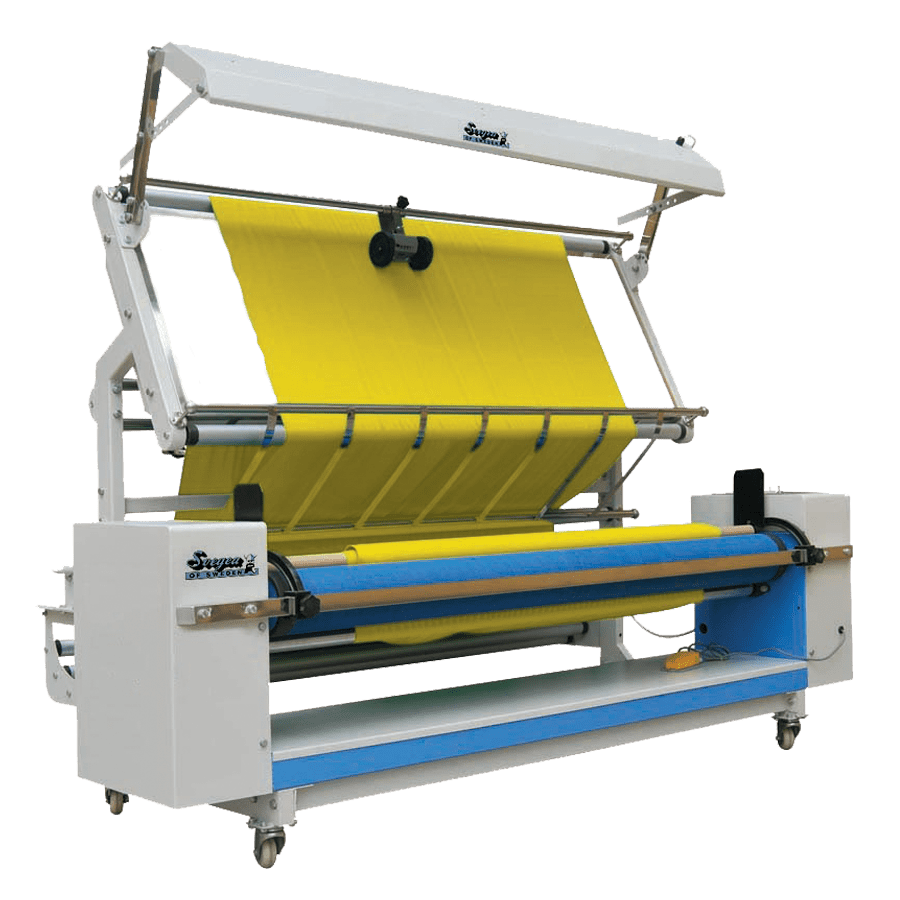
The Future of Fabric Inspection
Looking ahead, the future of fabric inspection lies in further advancements in AI technology. As AI systems become more sophisticated, they will be able to detect even more subtle defects and provide even greater accuracy. This will set new benchmarks for quality control in the textile industry.
Additionally, the integration of AI with other technologies, such as the Internet of Things (IoT) and machine learning, will open up new possibilities for fabric inspection. For instance, IoT-enabled sensors can provide real-time data on fabric conditions, which AI systems can analyze to predict potential defects before they occur.
Revolutionizing the Fabric Inspection Technology
AI technology is revolutionizing fabric inspection, making it more accurate, efficient, and consistent. Companies like Svegea of Sweden are leading the way, demonstrating the immense potential of AI in the textile industry. By embracing this technology, manufacturers can ensure that their fabrics meet the highest quality standards, enhancing their reputation and customer satisfaction.
If you are interested in learning more about how AI can transform your fabric inspection processes, visit Svegea of Sweden’s fabric inspection page. Discover how their innovative solutions can help you achieve unparalleled quality control in your textile production.

